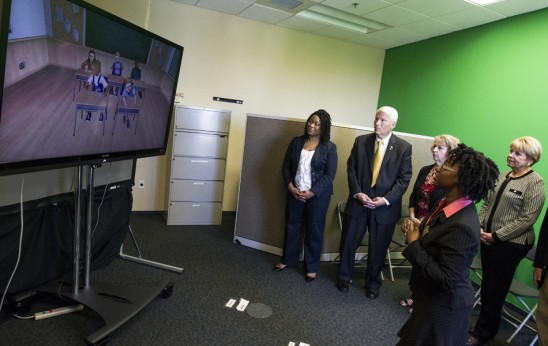A virtual classroom software is an easy medium to make learning a time and cost saving affair. E-learning is a standard in the corporate sector now where companies find it most essential in terms of employee training as well as new recruits orientation etc. Now, these types of software are an essential part of the employee engagement policies of companies.
A virtual classroom software is the next generation of traditional online educational tools, which enables a virtual access for trainee to all the learning materials, research data, assessments, and live external resources including R&D and corporate databases.

Advanced Features
Most of the new-age virtual classroom modules also incorporate Web 2.0 software, which facilitates one-on-one interaction. There are also content management systems (CMS) which helps to manage various data and statistics effectively. With the help of such comprehensive e-learning platforms, multi-location training and any-time learning are made so much possible now.
This kind of flexibility makes training more versatile and effective in a corporate setting, where of the personnel are often running short on time and resources for classroom training sessions.
In simpler terms, a virtual or online classroom software offers the trainees various options on how they like to be trained, which in turn gives them a personalized feel to be most comfortable. This is the actual goal of successful employee engagement.
Why Virtual Classrooms?
More than physical classroom sessions, virtual learning found to be more subjected to debates, such as live chatting or video conferences between the trainers and trainees at various locations. One argument which stands against the use of virtual learning is that it costs too high and has too much features which are not always needed for the trainees, but only helps to confuse them.
However, this argument doesn’t have any base as the cost of the new-age virtual classroom software is far less when compared to the infrastructure and facilitation cost of real classroom training. Next, they are not rigid one-fit-to-all kind of solutions, but are highly customizable based on the needs of a specific organization or an individual.
Such generic software can be customized based on the nature of training, topics, grade of trainees, duration of training, mode of delivery, method of screening, virtual support, theoretical / practical training, and in many other combinations to deliver the best.
Some sure-shot benefits of virtual training as attested by the corporate already using virtual classroom training are;
Ø These will help reduce the cost of training to new hires.
Ø It will save significant time in terms of teaching a single trainee.
Ø These software enable web-based lessons, which fully eradicates the need for a dedicated trainer.
Ø Virtual training will help the trainees and administrators overcome any location or time constraints.
Ø Through these platforms, networking and communication is made easy among various personnel and training departments.
Improving Efficiency of Employee Training
Most of the virtual classroom software help optimize multi-dimensional training experience through presentations, video lessons, and virtual reality; all of which coming together to make the trainees adapt well to corporate culture. These features will offer the trainees a hands-on experience too, through which they get adequate level of competency and most needed practical experience to execute their tasks more effectively.

